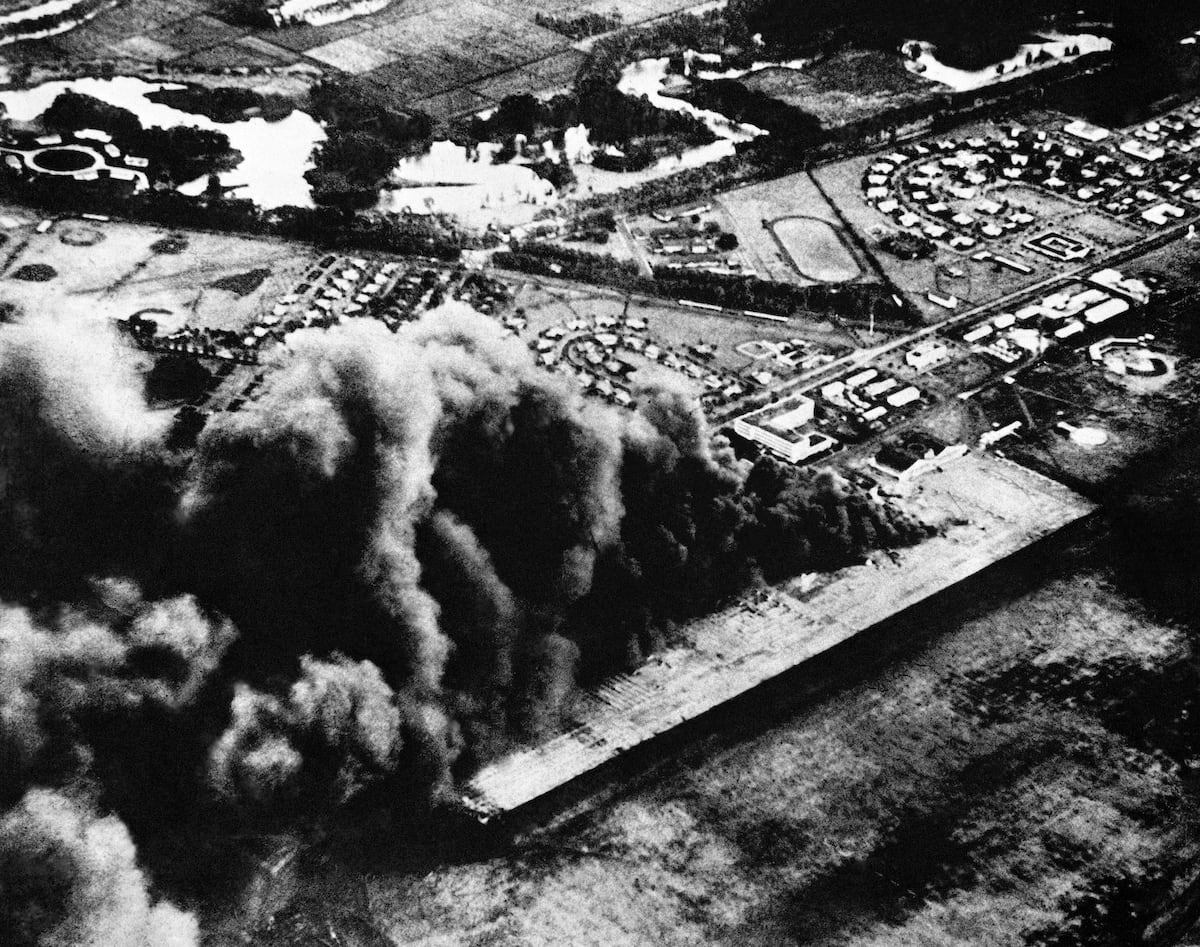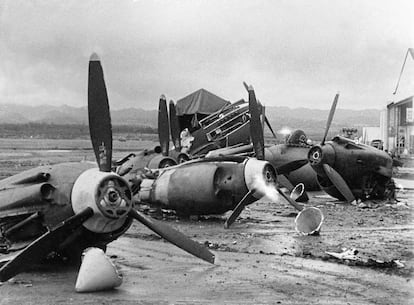World
Pearl Harbor Day: A timeline of the event that lead the United States into World War II

Prior to the attack on Pearl Harbor on December 7, 1941, the United States was a neutral country in World War II. As the global powers clashed, president Roosevelt was in negotiations with Japan over the future of the Pacific. The Japanese primarily wanted the United States to end its sanctions against Japan and cease its aid to China in the Second Sino-Japanese War. Anticipating a negative response, Japan sent its naval strike groups near Oahu in northern Hawaii, a U.S. territory, for a surprise offensive.
The attack was carried out before Japan made a formal declaration of war. Although the military intended to declare war 30 minutes before the attack, the message did not reach Washington until hours later.
Today, Americans celebrate National Pearl Harbor Remembrance Day (or Pearl Harbor Day) on December 7, to remember and honor the Americans who died in the surprise attack that lasted about four hours. This is how the events of that “infamous” day unfolded.
Timeline of the attack on Pearl Harbor on December 7, 1941
3:42 a.m. The USS Condor, a U.S. minesweeper, spots the periscope of a submarine near the entrance to Pearl Harbor.
6:10 a.m. The first wave of Imperial Japanese Navy aircraft — with about 200 planes — takes off from aircraft carriers about 275 miles north of Oahu.
6:45 a.m. The United States fires its first shots of World War II when the USS Ward fires on a Japanese submarine.
6:53 a.m. The captain of the USS Ward radios the Fourteenth Naval District. “We have attacked, fired and dropped depth charges on a submarine operating in the defensive sea area.” The district commander takes no action, believing this to be an isolated incident.
7:02 a.m. A U.S. Army radar operator spots a large formation of aircraft heading toward Oahu.
7:20 a.m. A lieutenant dismisses the radar report, believing it was a flight of U.S. aircraft. Some B-17 bombers were due to arrive that day.
7:40 a.m. At this time, the first wave of Japanese aircraft arrives at Oahu.
7:48 a.m. The Japanese wave commander gives the order to proceed with the attack on Pearl Harbor. Fighter planes begin dropping bombs on the harbor.
7:55 a.m. The attack on Pearl Harbor begins.
8:10 a.m. The battleship USS Arizona explodes following an attack. 1,117 officers and sailors are killed, nearly half the casualties of the attack.

8:17 a.m. The USS Helm sinks a Japanese submarine at the entrance to Pearl Harbor.
8:54 a.m. The second wave of Japanese aircraft —about 170 planes— begins its attack.
9:30 a.m. The USS Shaw explodes after an attack.
10:00 a.m. The Japanese return to their aircraft carriers.
A total of 353 Japanese planes took part in the attack. Twenty-nine of those planes did not return. A total of 2,404 American servicemen and civilians died after the attack, while only 64 Japanese officers and sailors died and one was taken prisoner.

Among the U.S. ships classified as total losses were the battleships Arizona and Oklahoma, as well as the battleship Utah. Despite suffering damage and sinking, the West Virginia was repaired and returned to active service. She was the only ship attacked at Pearl Harbor that was present during Japan’s formal surrender on September 2, 1945.
Sign up for our weekly newsletter to get more English-language news coverage from EL PAÍS USA Edition










